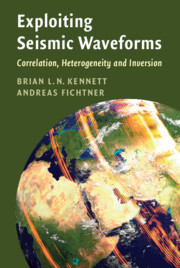Book contents
- Frontmatter
- Dedication
- Contents
- Preface
- 1 Introduction
- Part I Building the Seismic Wavefield
- Part II Correlation Wavefields
- 5 Correlations and Transfer Functions
- 6 Correlations and Interferometry
- 7 Correlations and Ambient Noise
- 8 Coda Correlations
- 9 Correlations in Receiver Studies
- Part III Interaction of Seismic Waves with Heterogeneity
- Part IV Inversion for Earth Structure
- Appendix Table of Notation
- Bibliography
- Index
7 - Correlations and Ambient Noise
from Part II - Correlation Wavefields
Published online by Cambridge University Press: 16 November 2020
- Frontmatter
- Dedication
- Contents
- Preface
- 1 Introduction
- Part I Building the Seismic Wavefield
- Part II Correlation Wavefields
- 5 Correlations and Transfer Functions
- 6 Correlations and Interferometry
- 7 Correlations and Ambient Noise
- 8 Coda Correlations
- 9 Correlations in Receiver Studies
- Part III Interaction of Seismic Waves with Heterogeneity
- Part IV Inversion for Earth Structure
- Appendix Table of Notation
- Bibliography
- Index
Summary
An important recent development has been the exploitation of the seismic noise field by the use of correlations between seismograms recorded at different positions. We discuss the nature of the ambient noise field, which is dominated by microseismic signals generated in the oceans. The dominant component of the correlation field comes from surface waves, and cross-correlation procedures can extract an empirical Green’s function representing propagation along the path between the stations being correlated.Such results are widely exploited in ambient noise tomography. In some circumstances body waves can also be extracted from the noise field.
Keywords
Information
- Type
- Chapter
- Information
- Exploiting Seismic WaveformsCorrelation, Heterogeneity and Inversion, pp. 157 - 178Publisher: Cambridge University PressPrint publication year: 2020
